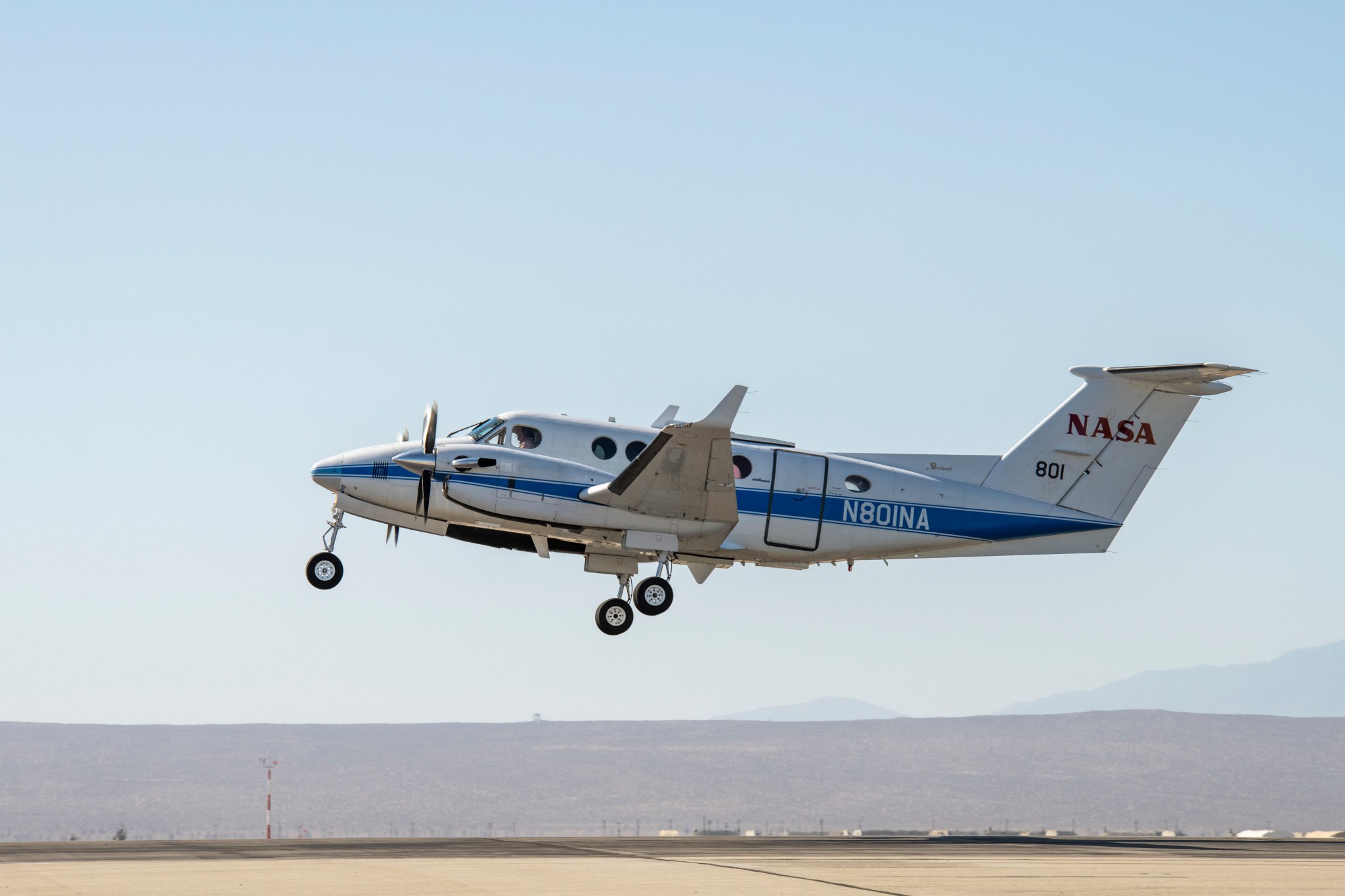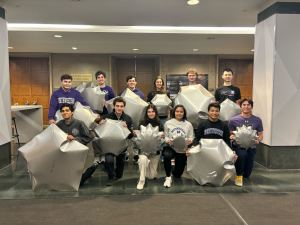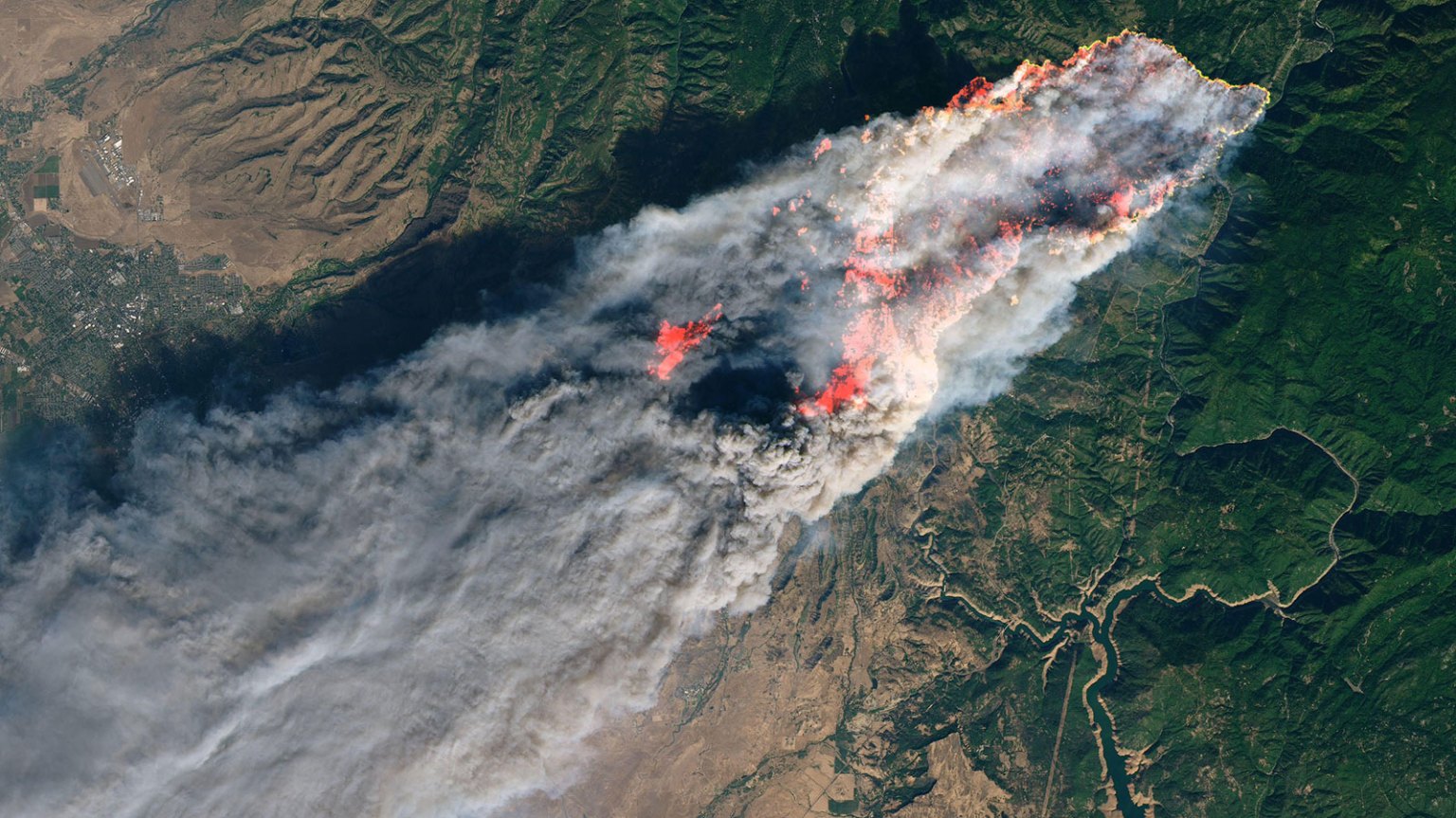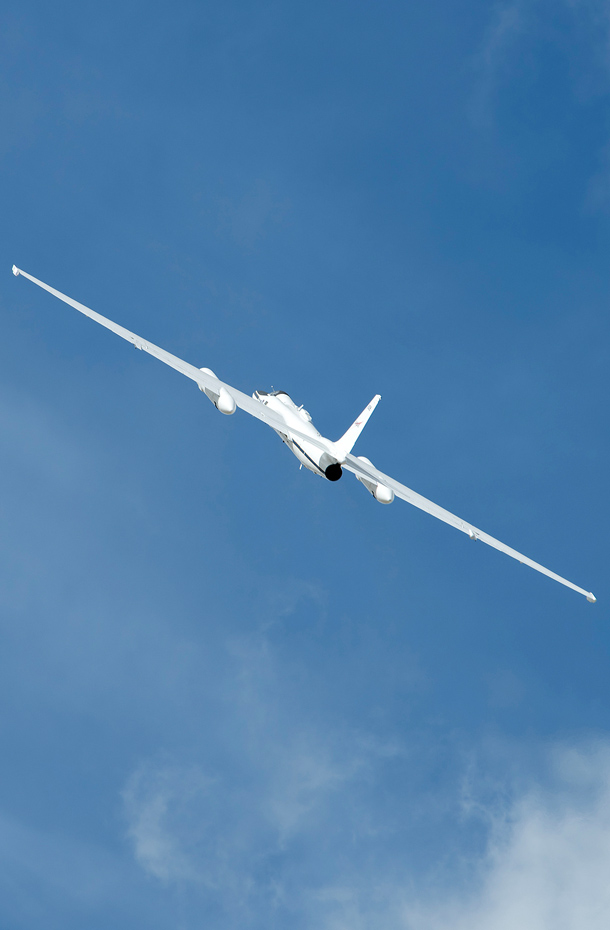Completing more than 80 hours of science flights, NASA Armstrong Flight Research Center’s B-200 King Air supports the Sub-Mesoscale Ocean Dynamics Experiment (S-MODE) in October.
While normally stationed at NASA Armstrong in Edwards, Calif., the aircraft was temporarily stationed at NASA’s Ames Research Center in California’s Silicon Valley to study ocean currents and winds off the coast of San Francisco Bay. The King Air had two instruments onboard; one to measure the ocean winds (DopplerScatt), and the other to observe the ocean surface by camera system (MOSES).
Weather conditions, including high winds, were important for the science flights to collect the necessary data. However, gathering that data required flying a flight path through conditions that are challenging for pilots.
“As a pilot, we would have to adjust our science track lines with strong winds at altitude,” says NASA Armstrong pilot, Hernan Posada. “The winds on the surface are much different than at 28,000 feet (altitude). Therefore, trying to get the autopilot to fly the ‘line’ was a challenge. However, timing the turns at the end of the science line to start the next line was fun.”
During this campaign, data collection from the sea and sky was provided by the King Air, which served as a testbed for researching the ocean, in conjunction with two additional NASA aircraft, a ship, and marine drone.
A third and final deployment for S-MODE is scheduled for next spring.































